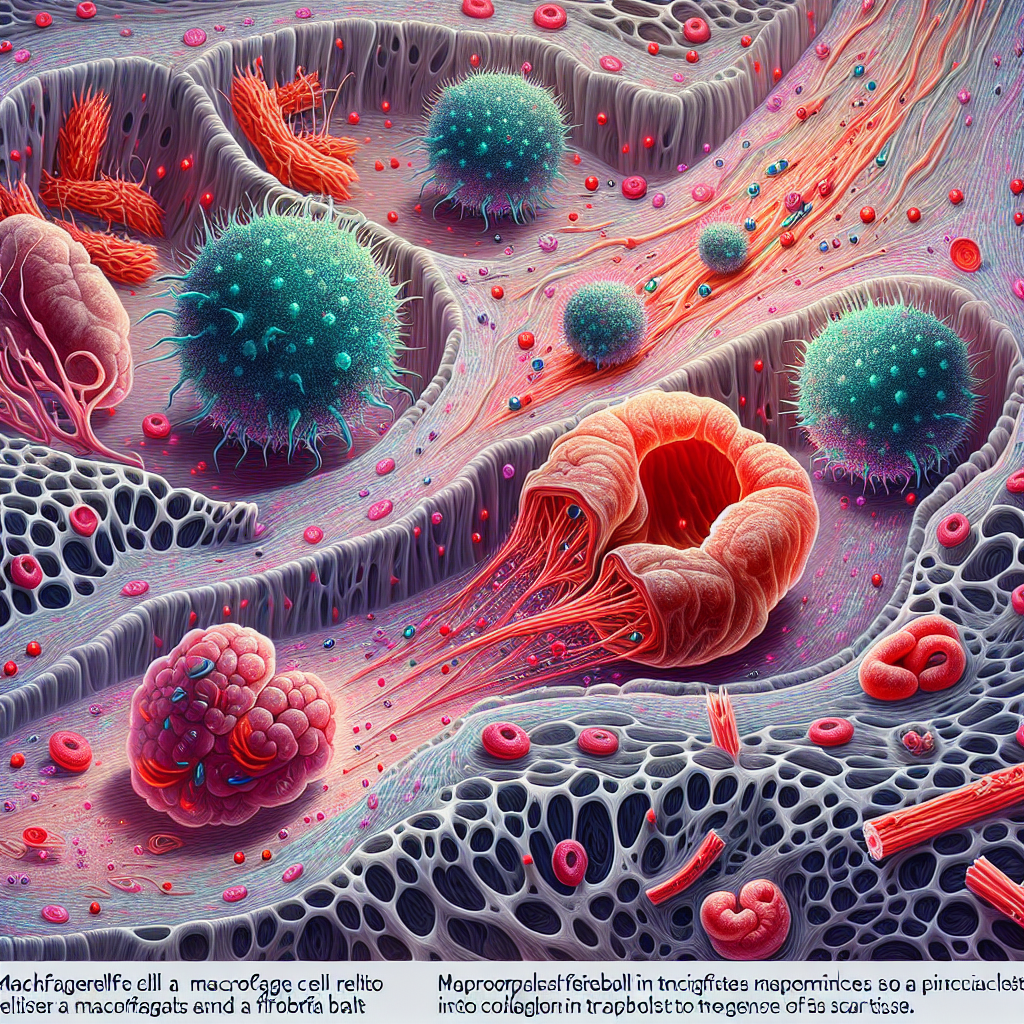Heart failure remains a significant global health concern, with millions of people affected worldwide. A groundbreaking study published in Nature sheds new light on the intricate molecular mechanisms driving immune-fibroblast cell communication in human cardiac disease. This research not only deepens our understanding of heart failure but also paves the way for potential new treatments targeting cardiac fibrosis.
Unraveling the Complexities of Inflammation and Fibrosis in Heart Disease
Inflammation and tissue fibrosis are closely linked to organ dysfunction, particularly in the heart. However, the specific molecular pathways that facilitate communication between immune cells and fibroblasts in cardiac disease have remained elusive until now. This gap in knowledge has hindered the development of treatments directly targeting cardiac fibrosis, a key factor in heart failure progression.
The study’s findings reveal a complex interplay between different cell types and signaling molecules, offering new insights into the pathogenesis of heart failure and potential therapeutic targets.
Identifying Distinct Fibroblast Subtypes in Diseased Hearts
One of the study’s key discoveries was the identification of a disease-associated fibroblast trajectory. This trajectory diverges into two distinct populations:
1. Myofibroblasts
2. Matrifibrocytes
Matrifibrocytes are particularly noteworthy as they express two important proteins:
– Fibroblast activator protein (FAP)
– Periostin (POSTN)
These proteins play crucial roles in the fibrotic process and may serve as potential biomarkers or therapeutic targets in future research and treatment strategies.
The Critical Role of IL-1β Signaling in Cardiac Fibrosis
Understanding the Signaling Pathway
The research uncovered a vital signaling pathway involving Interleukin-1β (IL-1β). This pathway functions between two specific cell types:
1. C-C chemokine receptor type 2 (CCR2) macrophages
2. Fibroblasts
This IL-1β signaling drives the emergence of FAP/POSTN fibroblasts within specific areas of the heart. These fibroblasts contribute significantly to the development of cardiac fibrosis.
Therapeutic Implications of IL-1β Inhibition
In a groundbreaking experiment, researchers inhibited IL-1β signaling using a monoclonal antibody. The results were promising:
– Reduction in FAP/POSTN fibroblasts
– Decreased myocardial fibrosis
– Improved cardiac function
These findings suggest that targeting IL-1β signaling could be a viable therapeutic strategy for treating heart failure and reducing cardiac fibrosis.
Advanced Experimental Models: Bridging the Gap Between Human and Animal Studies
To ensure the relevance and translational potential of their findings, the researchers employed cutting-edge experimental techniques:
1. Multiomic single-cell gene expression analysis
2. Epitope mapping
3. Chromatin accessibility profiling
These methods were applied to a comprehensive sample of 45 human hearts, including:
– Healthy donor hearts
– Acutely infarcted hearts
– Chronically failing hearts
The study also compared different experimental models to determine which best replicated human disease conditions. Interestingly, three in vivo mouse models of cardiac injury proved superior in recapitulating the human disease phenotype compared to cultured human heart and dermal fibroblasts.
This finding underscores the importance of selecting appropriate experimental models in cardiovascular research to ensure that results are as relevant as possible to human disease.
Broader Therapeutic Potential: From Heart Failure to Other Fibrotic Diseases
While the study focused on heart failure, its implications extend far beyond cardiac health. The findings highlight the broader therapeutic potential of targeting inflammation to treat tissue fibrosis and preserve organ function across various diseases.
This approach could lead to the development of new treatments for conditions characterized by excessive fibrosis, such as:
– Liver cirrhosis
– Pulmonary fibrosis
– Kidney fibrosis
By preventing the formation of new scar tissue that causes a loss of organ function, these potential treatments could significantly improve patient outcomes and quality of life.
Frequently Asked Questions
Q: What is cardiac fibrosis?
A: Cardiac fibrosis is the excessive accumulation of fibrous tissue in the heart, often resulting from injury or disease. It can lead to stiffening of the heart muscle and impaired function.
Q: How does inflammation contribute to heart failure?
A: Inflammation can trigger the activation of fibroblasts, leading to excessive scar tissue formation in the heart. This scarring can impair the heart’s ability to pump blood effectively, contributing to heart failure.
Q: What are fibroblasts, and why are they important in heart disease?
A: Fibroblasts are cells that produce the extracellular matrix and collagen in tissues. In heart disease, activated fibroblasts can contribute to excessive scarring and fibrosis, impacting heart function.
Q: How might targeting IL-1β signaling help treat heart failure?
A: Inhibiting IL-1β signaling could reduce the activation of fibroblasts that contribute to cardiac fibrosis. This may help prevent or reverse the scarring process in the heart, potentially improving heart function in patients with heart failure.
Q: Are there any current treatments that target cardiac fibrosis?
A: Currently, there are no approved treatments that directly target cardiac fibrosis. This study’s findings may lead to the development of new therapies specifically aimed at reducing heart scarring.
Conclusion: A New Chapter in Heart Failure Research and Treatment
This groundbreaking study opens up new avenues for understanding and treating heart failure. By elucidating the intricate communication between immune cells and fibroblasts in the heart, researchers have identified potential targets for therapeutic intervention.
The discovery of the role of IL-1β signaling in driving cardiac fibrosis provides a promising direction for future drug development. If successful, treatments targeting this pathway could potentially slow or even reverse the progression of heart failure, offering hope to millions of patients worldwide.
As research in this field continues, we can anticipate further insights into the complex interplay between inflammation, fibrosis, and organ dysfunction. These advances may not only benefit heart failure patients but could also have far-reaching implications for the treatment of fibrotic diseases affecting other organs.
The journey towards more effective heart failure treatments has taken a significant step forward, paving the way for innovative therapies that could dramatically improve patient outcomes and quality of life.
Source: Nature – Targeting immune–fibroblast cell communication in heart failure
